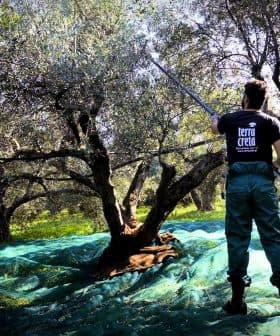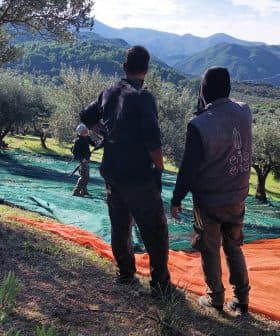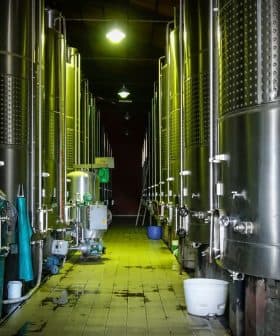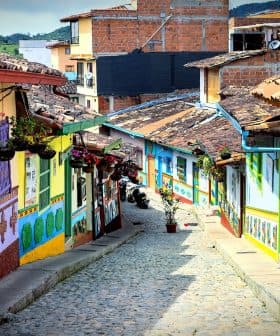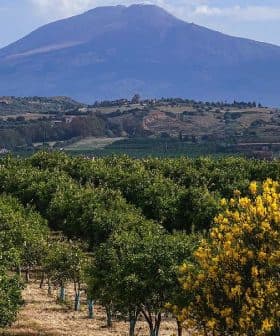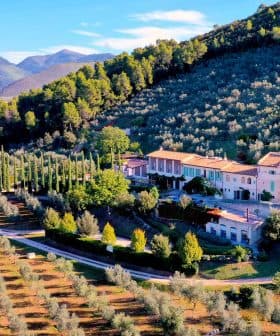Producers in Uruguay See Awards Fueling Exports, Local Olive Oil Culture
Uruguayans turned heads at the 2023 World Olive Oil Competition, setting their sights on export markets and homegrown appreciation.
 The 2023 harvest gets underway in March in the groves of Olivares de Rocha. (Photo: Nuevo Manantial)
The 2023 harvest gets underway in March in the groves of Olivares de Rocha. (Photo: Nuevo Manantial) Uruguay’s top olive oil producers, Agroland and Nuevo Manantial, had a successful 2023 and are now preparing for the 2024 harvest, having won awards at the NYIOOC World Olive Oil Competition. The country’s olive oil sector is growing, with the two companies responsible for most exports, and efforts are being made to educate consumers about the benefits of locally-produced olive oil and improve cultivation practices in Uruguay’s humid climate.
Uruguay’s two largest olive oil producers are coming off a superb 2023 and looking ahead to 2024.
Maldonado-based Agroland and Rocha-based Nuevo Manantial produced more than half of the small South American country’s olive oil yield while combining to earn two Gold Awards and a Silver Award at the 2023 NYIOOC World Olive Oil Competition.
In markets like the United States, Uruguay is known for meat, dairy products and grains, but not for olive oil. These awards help us establish ourselves as an olive oil brand.
Agroland, which produced the Colinas de Garzón brand, earned a pair of Gold Awards for its medium-intensity blends. Meanwhile, Nuevo Manantial earned a Silver Award for its Olivares de Rocha brand, which is also a medium blend.
“For us, who are in a very small country, having this international recognition is very good,” Victor Rodriguez, the head of production for Agroland, told Olive Oil Times. “It fills us with pride and opens a path for us to any market we may want to enter.”
See Also:An Award-Winning Finish to A Fruitful Harvest in The Southern ConeAccording to its olive sector census published in December 2023, the Uruguayan Ministry of Ranching, Agriculture and Fisheries said the country produced about 2,047 tons of extra virgin olive oil in the 2022/23 crop year. Of that total, Agroland and Nuevo Manantial were responsible for 1,200 tons.
While the harvest fell significantly below the original estimate of a record-high 3,000 tons, it exceeded the previous yield of 1,544 tons produced in the 2021/22 crop year.
The two companies are responsible for most Uruguayan exports, shipping their oils to neighboring Brazil and, more recently, the United States.
While the latest data have not yet been published, the Ministry of Ranching, Agriculture and Fisheries said the country exported 530 tons of extra virgin olive oil valued at $2.4 million between March 2022 and April 2023.

Nuevo Manantial’s modern mill in Rocha is the largest in Uruguay. (Photo: Nuevo Manantial)
Due to the previous crop year’s bumper harvest, which ended in early August, exports are expected to increase.
According to Rodriguez, winning awards at the NYIOOC helped put Uruguay, which has only been producing olive oil commercially for 20 years, on the world map.
“In markets like the United States, Uruguay is known for meat, dairy products and grains, but not for olive oil,” he said. “These awards help us establish ourselves as an olive oil brand, knowing that we come from a country not known for olive oil production.”
Along with helping the brand stand out in fledgling export markets, Rodriguez said the awards also help encourage Uruguayans to purchase and consume locally-produced extra virgin olive oil.
A 2022 study from the Ministry of Ranching, Agriculture and Fisheries found that annual olive oil and olive pomace oil consumption sits around 1,700 tons – about 500 grams per capita per annum – of which 40 percent is locally produced and 60 percent is imported.
“The awards are a way to encourage consumption of locally-produced olive oil, letting the Uruguayan consumers know that this national produce is of very high quality,” he said.
Many olive oils imported from Europe arrive in Uruguay in less-than-ideal conditions, having spent at least a month crossing the tropics and equator inside metal shipping containers. If the exporter has not paid extra for a climate-controlled container, the oil inside has almost certainly been damaged by exposure to high temperatures.
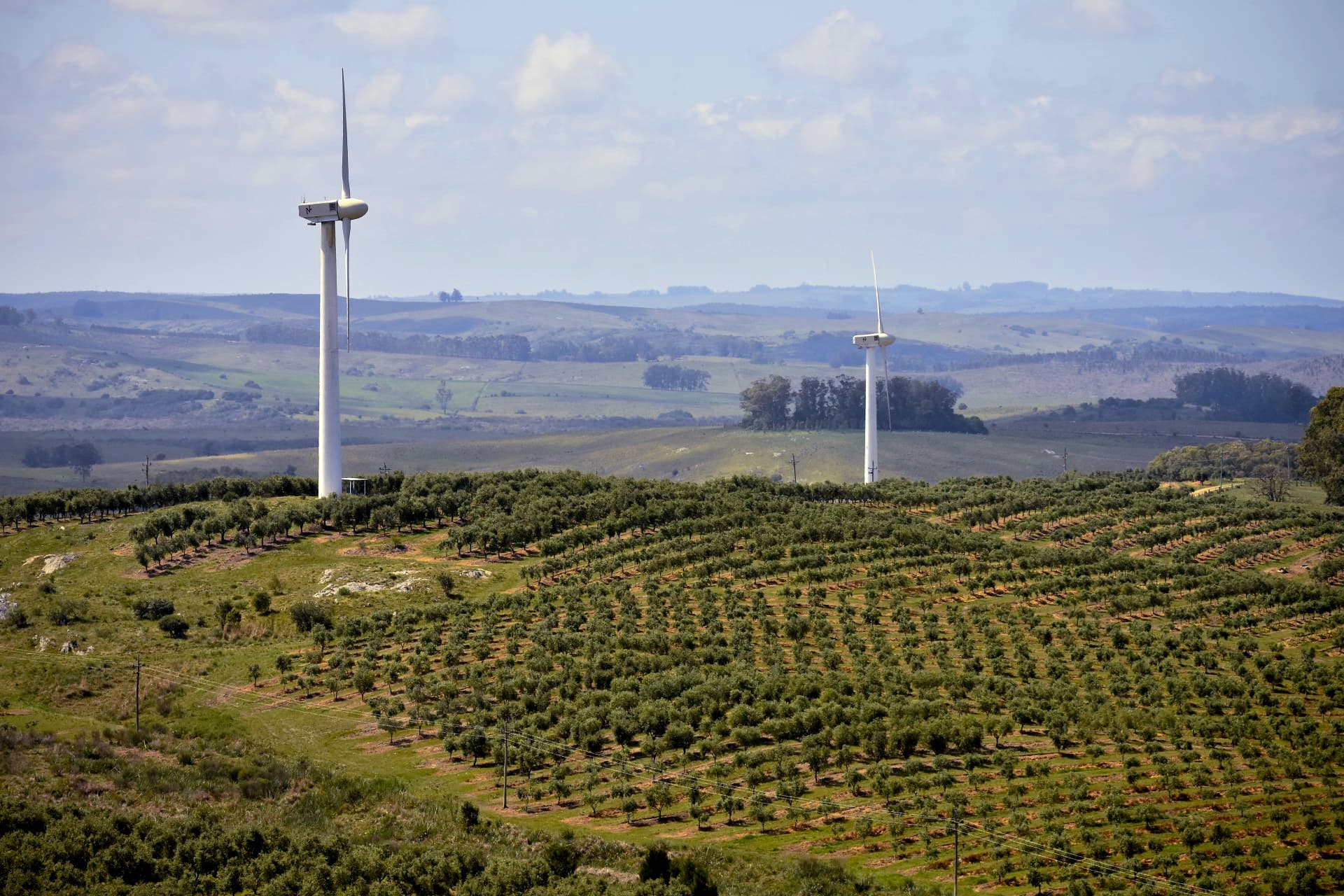
According to a representative from a well-known European olive oil exporter, temperatures can exceed 60 ºC for multiple weeks in non-climate-controlled containers that are traveling during the summer or through the tropics.
“Nationally-produced olive oils have almost certainly been stored in superior conditions to anything that is imported from Europe,” Rodriguez said.
He believes that education is also key to cultivating a national olive oil culture, applauding the efforts of Asolur, the national producer association, to do just that.
He cited olive oil-specific aisles in several national supermarket chains, which have been demonstrated to increase sales, and olive oil-specific trade events as a few educational efforts starting to bear fruit.
“Chefs and nutritionists go to these events and talk about the health benefits of olive oil and how to cook with olive oil, emphasizing that it is not just for salad,” Rodriguez said. “The challenge is to carry out campaigns to educate people about the consumption of olive oil and the benefits it has.”
Along with encouraging domestic consumption, Rodriguez said one of the most consistent challenges facing producers is how to grow healthy olives in Uruguay’s humid climate.
“In Uruguay, there is a lot of humidity. As a result, many diseases and types of fungus proliferate. To combat these and prevent them from damaging the olives and, therefore, the oil, we need to spray the trees,” he said. “However, we have to be very careful to make sure there is no residue on the olives when they are harvested and turned into olive oil.”
See Also:Producer ProfilesThis means the final phytosanitary application must occur more than 40 days before the harvest to ensure the chemicals have dissipated before the olives are picked, washed and milled. Additionally, producers looking to export to the United States have a limited list of chemicals approved by the U.S. Food and Drug Administration.
According to Rodriguez, the stakes are high; if any exported extra virgin olive oil tests positive with residuals of a non-approved phytosanitary product, the company will have difficulty getting permission to export to the U.S. again. “This is the biggest challenge that we have every year since we want to capture market share in the United States,” he said.
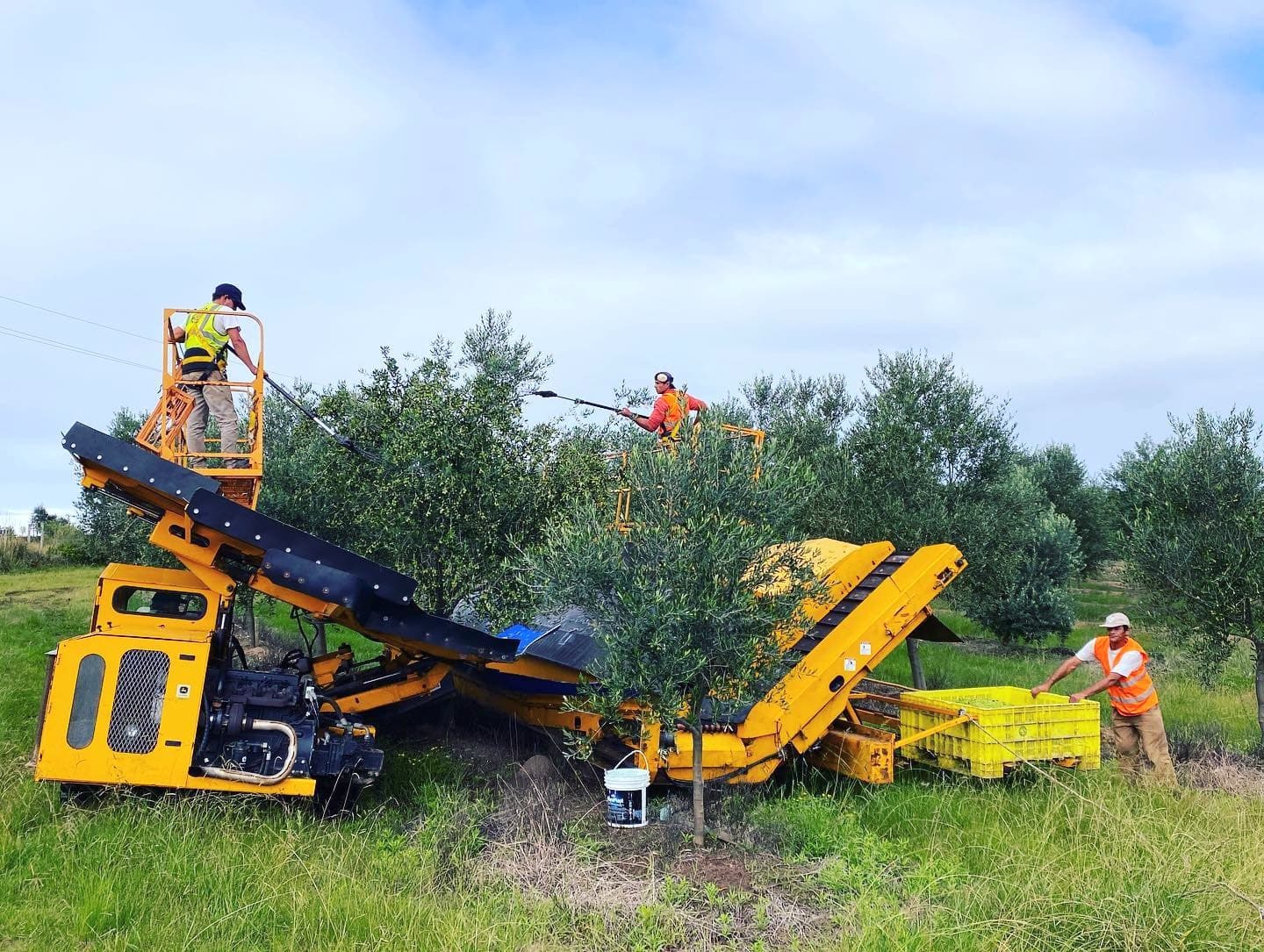
Rocha is Uruguay’s second-largest olive growing region. (Photo: San Antonio Studio)
Looking ahead to 2024, observers expect the coming harvest to be lower than the previous one due to the natural alternate bearing cycle of the olive tree.
“Olive trees always have alternate bearing years,” Rodriguez said. “What we can do as a company to mitigate drop off is to prune right away. As soon as the harvest finishes, we prune the olive trees so they can concentrate their energy on producing fruit for next year.”
Along with pruning, Rodriguez said providing the trees with the necessary nutrients also ensures that the alternation between ‘on-years’ and ‘off-years’ is as low as possible. To do this as efficiently as possible, Agroland keeps track of how much fruit each tree bore.
“If we know that a tree yielded 40 kilograms on year, the agronomists know how many grams of fertilizer to use to provide the tree with the nutrients it needs to produce this quantity again,” Rodriguez said.
However, he acknowledged that the climate will be the most significant factor to forecast the coming year’s production.
Uruguay is currently experiencing the impacts of El Niño, which has resulted in a significant amount of rain in the spring, helping to break the country’s historic drought.
While the rain has refilled rivers, reservoirs and aquifers, it means that the teams of agronomists at Agroland and Nuevo Manantial will need to be wary of pests and fungi that thrive in warm and humid weather, especially as they look to repeat their success at the 2024 NYIOOC.
Share this article


